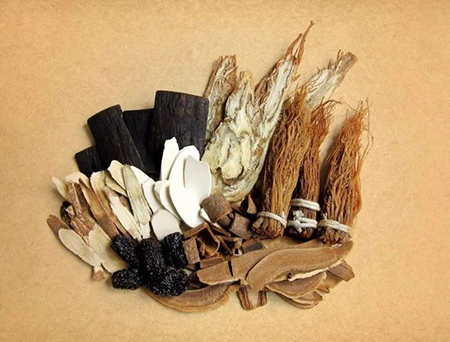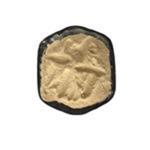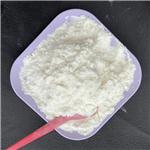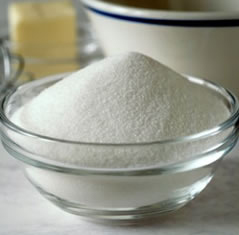The performance of ferulic acid
Feb 22,2022
Background
Ferulic acid (F.A) is a derivative of cinnamic acid (cinnamic acid) with the chemical name 4-hydroxy-methoxycinnamic acid, which is essentially a plant phenolic acid. Ferulic acid extracted from wheat bran, angelica, ferulic acid, chuanxiong and equisetum are all derivatives of cinnamic acid. The picture 1 showes the sources of ferulic acid. Ferulic acid in food exists in three states: water-soluble, fat-soluble and bound. Water-soluble ferulic acid exists in the cytoplasm of plants. Ferulic acid and some small molecules (monosaccharides, disaccharides, polyamines, etc.) in this state are easily soluble; the fat-soluble state refers to ferulic acid and some lipids. Soluble substances (sterols, etc.) are combined, mainly in the waxy layer on the surface of plants; bound state means that ferulic acid is combined with plant cell wall substances (polysaccharides, proteins and lignin) in the form of lipids or ethers.

The picture 1 The sources of ferulic acid
Ferulic acid is a common phenolic acid in the plant kingdom. It has many health care functions, such as scavenging free radicals, antithrombotic, antibacterial and anti-inflammatory, inhibiting tumors, preventing and treating hypertension, heart disease, and enhancing sperm motility. It is clinically used to treat cerebral thrombosis, vasculitis, thrombocytopenia, coronary heart disease, angina pectoris and ischemic cerebrovascular disease, etc. At the same time, studies have shown that ferulic acid has low toxicity and is easy to be metabolized by the human body, and its use is becoming more and more extensive . Ferulic acid is a recognized natural antioxidant and an internationally recognized anti-cancer substance in recent years. attract the attention of the world. Ferulic acid has good antioxidant activity, has a strong scavenging effect on hydrogen peroxide, superoxide radicals, hydroxyl radicals, peroxynitroso groups, and can regulate physiological functions, inhibit the production of free radical enzymes, increase Scavenge free radical enzyme activity.
The antioxidant of ferulic acid
The living organism is always attacked by endogenous or exogenous reactive oxygen species, which induces a series of diseases, such as atherosclerosis, cancer, cataract, etc. Hydrogen oxide, superoxide radicals, hydroxyl radicals, and nitroso peroxide have strong scavenging effects. Ferulic acid can not only quench free radicals, but also regulate human physiological functions, inhibit the enzymes that generate free radicals, and promote the production of enzymes that scavenge free radicals. It has been reported that ferulic acid can greatly increase the activities of glutathione transsulfurase and titanate reductase, inhibit the activity of tyrosinase, and can combine with membrane phosphatidylethylamide to protect membrane lipids from free radicals.
The antithrombotic properties of ferulic acid
Ferulic acid can effectively inhibit platelet aggregation, and can inhibit the release of serotonin and thromboxane-like substances and selectively inhibit the activity of thromboxane synthase, so that the ratio of prostaglandins and thromboxanes increases, so it has antithrombotic effects. Ferulic acid mainly inhibits the release of thromboxane through the following mechanisms: (1) selectively inhibits thromboxane synthase; (2) antagonizes thromboxane; (3) prevents the release of arachidonic acid by inhibiting phospholipase A2 (PLA2), thereby preventing The generation of TXA2, etc. is interrupted. Ferulic acid's inhibition of platelet aggregation is also related to its ability to increase C-AMP levels and inhibit phosphodiesterase activity.
The hypolipidemic effect of ferulic acid
The lipid-lowering mechanism of ferulic acid is believed to be that it can competitively inhibit the activity of valonate-5-pyrophosphate dehydrogenase in the liver, that is, ferulic acid has the effect of inhibiting the synthesis of cholesterol in the liver.
Prevention and treatment of coronary heart disease
Ferulic acid can reduce myocardial ischemia and oxygen consumption, and is clinically used to treat coronary heart disease and angina pectoris. The main and most basic cause of coronary heart disease is atherosclerosis, and the inducement of atherosclerosis is lipid Substances are oxidized by free radicals. Ferulic acid can prevent and treat atherosclerosis by inhibiting lipid oxidation, reducing serum cholesterol content and antithrombotic effect, thereby treating coronary heart disease.
Antibacterial anti-inflammatory
Ferulic acid has a significant inhibitory effect on cold virus, respiratory syncytial virus (RSV) and HIV. The inhibitory effect of ferulic acid and its derivatives on HIV makes it a potential chemotherapeutic agent. The inhibitory mechanism of ferulic acid on the virus may also be related to its ability to inhibit the activity of Huanghaoyin oxidase, because this enzyme is closely related to some inflammatory diseases. The inhibitory effect of ferulic acid on bacteria showed a broader spectrum. It has been found that ferulic acid can inhibit the reproduction of pathogenic bacteria such as Shigella sonnei, Pneumococcus, Enterobacter, Escherichia coli, Citrobacter, Pseudomonas aeruginosa and 11 kinds of microorganisms that cause food spoilage. Ferulic acid has a strong inhibitory effect on bacterial N-acetyltransferase, which may be the main reason for its antibacterial effect.
Antimutagenic and anticancer effects
Recently, reports on the inhibition of colon cancer, rectal cancer and tongue cancer by ferulic acid and its derivatives are increasing. The number of abnormal lesions decreased by 27%. It has also been reported that the anticancer activity of ferulic acid is related to its ability to activate detoxification enzymes such as glutathione transsulfurase and aldehyde reductase.
Renference
1 Yang Shuixin, Yan Jianmin, Ye Yong, etc. The content of ferulic acid in Jizhi syrup was determined by RP-HPLC. Chinese Journal of Traditional Chinese Medicine, 2000, 25(1): 54-55
- Related articles
- Related Qustion
- Antithrombotic effects, mechanisms and side effects of Ferulic Acid Jan 9, 2025
Ferulic Acid (FA) is an important polyphenol found in many traditional Chinese medicines (e.g., Ligusticum chuanxiong and Radix Angelicae Sinensis) and belongs to the cinnamic acid derivatives of phenolic acids, whose pharmacophore (catecho
- Ferulic Acid: An Overview of Its Synthesis, Composition, Applications, and Storage Nov 20, 2024
Ferulic acid, a key phenolic compound, plays a crucial role in the biosynthesis of plant cell walls.
- Synthesis of Ferulic acid Dec 16, 2021
Ferulic acid is a ferulic acid consisting of trans-cinnamic acid bearing methoxy and hydroxy substituents at positions 3 and 4 respectively on the phenyl ring.
Ferulic Acid
1135-24-6You may like
- Ferulic Acid
-

- $6.00 / 1kg
- 2025-04-15
- CAS:1135-24-6
- Min. Order: 1kg
- Purity: 99%
- Supply Ability: 2000KG/Month
- Ferulic Acid
-

- $4.00 / 1kg
- 2025-04-15
- CAS:1135-24-6
- Min. Order: 1kg
- Purity: 0.99
- Supply Ability: 10000
- Ferulic Acid
-

- $0.00 / 25KG
- 2025-04-15
- CAS:1135-24-6
- Min. Order: 1KG
- Purity: 99%
- Supply Ability: 500000kg





